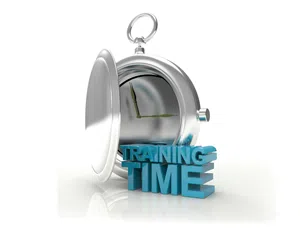As the owner of Pride Plumbing Heating and Cooling, a full-service HVACR company for the past decade, I have learned the importance of “process” in building a successful HVACR business. In this article, I intend to pull back the curtain on my management systems and give you an outline of our HVACR company process.
First, we believe the best approach is always to keep things simple. Our process is customized to fit our company's needs. It took time and trial and error, but I honed it to adapt to my business, my customers’ needs, and my staff. Thus, while I want you to benefit from my advice, you must develop these customized systems for your business needs. As with all HVACR companies, the daily processes consist of many moving parts and it’s never a one-size-fits-all equation.
Before going into the details of the process, let me share the key elements that contributed to our growth.
1. Communication. This is extremely important for any home service company. For us, we use a mobile and web application called Voxer to streamline communications. Using Voxer prevents our office phones from being tied up and gives us all the necessary information to help the technicians function well while out in the field as it delivers instant "walkie-talkie" like communication.
2. Upgrading and investing in advanced field software. Advanced technology makes the processes more effective. There are many different HVAC software options. Choosing the right one for you is an individual decision. But reputation, usability, and multi-device functionality are some things to review when deciding. I would stress that while this is an investment, it pays well long term. Remember to take the time to do research. Become an expert in your chosen software before launching company-wide because your team will have a multitude of questions. So, do your research and only launch when you are the expert on all systems.
Our Process and How It Can Work for You
The first step in up-leveling your processes is to create and understand operating systems. Each system starts with management’s direction and is created for the department for which it has been tailor-designed. For example, our CSR system or our service manager's system was tailor requested by me. I decided how it should work for that specific department. So, as the company owner, I needed to understand personally and experientially how each current system worked and what the needs were for each department. Once I was clear, I could then direct the necessary upgrades that should be implemented. These are systems that aim to maximize output and performance for each role. If I wasn’t familiar with the process, I would not be able to effectively upgrade the system. 
Good, Better, Best
Here's a breakdown of a typical callout process.
1. The service manager will call the customer, introduce himself, give the customer information on the technician’s ETA, and let the customer know he is en route.
2. Upon conclusion of the conversation with the customer, the service manager will reach out to the technician via Voxer and give him a summary of said conversation.
3. When the technician arrives at the customer's home, he parks in the driveway or street (wherever the customer can see him). He walks to the door, puts the branded-colored mat down, and knocks on the door. The customer then opens the door and is greeted with a business card and company announcement and a brief introduction from the technician. The first step for the technician, when greeted by the customer, is to try and build a relationship or find common ground with the customer before even beginning the service appointment. That streamlined process made clear and consistently practiced by all our technicians, over time, upgraded our reputation and accurately sets expectations for future appointments.
4. When the customer guides our tech to the issue, we diagnose it before producing three solutions. This is also known as the "good, better, best" system.
5. Once the technician has his solutions built out via our field software, he sends a message via Voxer to the service manager.
6. The service manager then calls the customer and assists them with any questions they might have before offering up the three solutions.
7. Once the customer agrees on a solution, the tech gets to work or has the installation crew do the job. Simple as that!
As you can see, the service manager is the ship's captain in this process. They are the ones who deal with the technicians, the installers, and the CSR throughout the day. It's so important to have a talented service manager and to stress the importance to the entire team of this role within the process.
HVACR repairs and installations as a service can be part of a larger complicated process. Still, it becomes much more manageable by using a standardized system such as the one we use at Pride. As an HVACR business owner, a good service manager will free you up and keep your focus on your company's growth rather than dealing with issues.
Ask for Reviews
This is understood, but as an HVACR company, it is important to get customer reviews. While this can be daunting at first, once you have good systems and processes in place, your team will have the confidence to request reviews at every call. Customers will likely leave a review if they had a good or bad experience. Bad reviews can hurt a business, but good reviews can help attract new customers. Again, get these processes down so that the entire team is consistent, and you will see your reviews improve.
Make sure that your technician requests a review right at the service call, live and in person. By this point, the technician should have built a good relationship with the customer. We find that customers are more apt to leave a review when asked to do so in person rather than when they receive an automated email request.
Don’t Rush – Trust the Process
Like any new system, adapting as a collective isn’t an overnight fix. Once you upgrade systems and implement a companywide set of processes, print it, and make it a manual. Then, train teams – role-play if you need to do that. Once your team understands the processes and has tried the new protocols a few times, it will become part of the routine. Eventually, the team will have a newfound collective confidence and more trust in the brand.
Lastly, always implement best practices that work for you. I hope by sharing a bit about our processes at Pride, your HVACR company will become more efficient, and more effectively managed, and your customers receive the best possible service every time.
Chad Collins, the founder and owner of Pride Plumbing Heating and Cooling in Grand Junction, Colorado, recently received a prestigious award from HVACR Magazine for outstanding branding of an HVAC Company. Collins has been a proud owner of Pride PHC for nearly 10 years and has always placed a strong emphasis on providing top-notch customer service. For information, visit https://www.prideplumbingphc.com.






